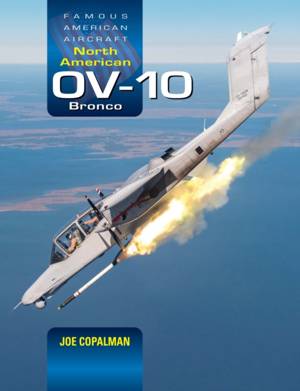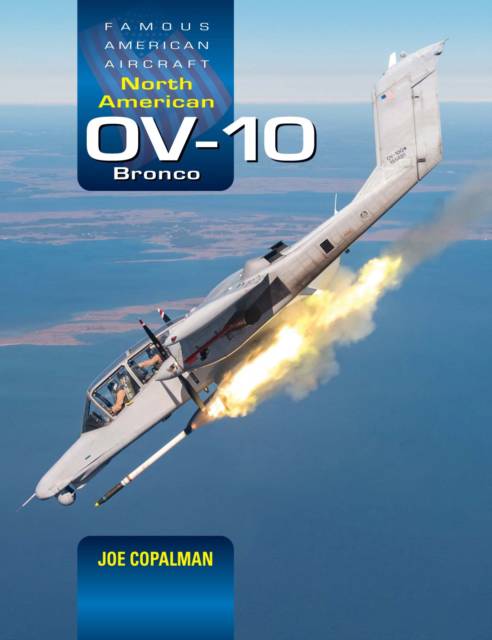
- Afhalen na 1 uur in een winkel met voorraad
- Gratis thuislevering in België vanaf € 30
- Ruim aanbod met 7 miljoen producten
- Afhalen na 1 uur in een winkel met voorraad
- Gratis thuislevering in België vanaf € 30
- Ruim aanbod met 7 miljoen producten
Zoeken
Omschrijving
The OV-10, the world's first purpose-built counter-insurgency (COIN) aircraft, has had a long and varied career. Primarily employed as a forward air control (FAC) platform, the Bronco was one of the few fixed-wing aircraft flown by the US Air Force (USAF), the US Marine Corps and the US Navy during the Vietnam War. The Bronco made its combat debut in Vietnam with the US Marine Corps in July 1968. The USAF followed shortly thereafter in September 1968, and the US Navy initiated OV-10 operations in Vietnam in April 1969. The US Marine Corps used the OV-10 as a ground-support jack-of-all trades, providing visual reconnaissance, FAC, helicopter escort, CAS, search and rescue, photo-reconnaissance, assisting in the insertion and extraction of Marine reconnaissance teams, and spotting for mortars, artillery and naval gunfire.
Following the Vietnam War, the USAF shifted its Bronco focus from jungle warfare in south east Asia to defending against large-scale armoured thrusts in West Germany and South Korea, before retiring its OV-10s in the early 1990s. The loss of two OV-10As over Kuwait was used by those within the US Marine Corps looking to the retire the type as an example of the Bronco's vulnerability over the modern battlefield. In 1994, the US Marine Corps Reserve retired its last OV-10s, bringing an end to the Bronco's US military career.
Demilitarised OV-10s have seen extensive employment with civilian agencies in the United States, with NASA using several for numerous flight test programmes, including one of the original YOV-10A prototypes modified for extreme low-speed flight. OV-10Ds were passed on to the US Department of State, which modified the aircraft for use as aerial applications platforms, spraying herbicides on coca and poppy fields in Colombia and Ecuador as part of America's war on illegal drugs.
As the US military and other air arms throughout the world address the need for a light attack platform, several companies have put forth designs that draw heavily from the OV-10 - a testament to the type's proven versatility and efficacy in the light attack role.
Following the Vietnam War, the USAF shifted its Bronco focus from jungle warfare in south east Asia to defending against large-scale armoured thrusts in West Germany and South Korea, before retiring its OV-10s in the early 1990s. The loss of two OV-10As over Kuwait was used by those within the US Marine Corps looking to the retire the type as an example of the Bronco's vulnerability over the modern battlefield. In 1994, the US Marine Corps Reserve retired its last OV-10s, bringing an end to the Bronco's US military career.
Demilitarised OV-10s have seen extensive employment with civilian agencies in the United States, with NASA using several for numerous flight test programmes, including one of the original YOV-10A prototypes modified for extreme low-speed flight. OV-10Ds were passed on to the US Department of State, which modified the aircraft for use as aerial applications platforms, spraying herbicides on coca and poppy fields in Colombia and Ecuador as part of America's war on illegal drugs.
As the US military and other air arms throughout the world address the need for a light attack platform, several companies have put forth designs that draw heavily from the OV-10 - a testament to the type's proven versatility and efficacy in the light attack role.
Specificaties
Betrokkenen
- Auteur(s):
- Uitgeverij:
Inhoud
- Taal:
- Engels
Eigenschappen
- Productcode (EAN):
- 9781800353329
- Verschijningsdatum:
- 30/05/2026
- Uitvoering:
- Hardcover
- Formaat:
- Genaaid
- Afmetingen:
- 216 mm x 280 mm

Alleen bij Standaard Boekhandel
+ 111 punten op je klantenkaart van Standaard Boekhandel
Beoordelingen
We publiceren alleen reviews die voldoen aan de voorwaarden voor reviews. Bekijk onze voorwaarden voor reviews.








